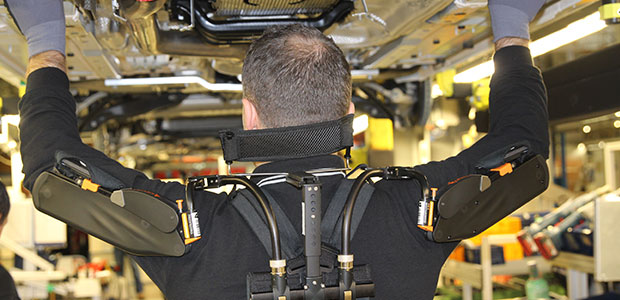
The Emerging Market of Exoskeletons
What if we could find a perfect balance between human labor and robotic technology? Exoskeletons are both increasing labor productivity while protecting worker safety. Here are some expectations for the future of exoskeleton technology.
Engineering, technology, and robots. There is a lot of power in possibility with new developments and software, and there are few forums in human life that could not use a little improvement. Human productivity and health have always been focuses of homo sapiens. How can we improve the productivity and efficiency of people and do so to reduce injury and/or death?
Optimizing physical augmentation is a part of this conversation, especially within the conversation of the workplace. Scientists and engineers have come up with some impressive devices to help people do their work, and with innovation: prosthetic limbs, power boosts, kinetic energy storage…the list of technologies goes on.
A lot of research has gone into exoskeletons to compensate for impairments, and with impressive results. Prosthetic limbs are the best example of this, but other gadgets and devices are being used in ways that don’t have to substitute for a missing limb, but to just reduce risk of injury and increase productivity.
One article analyses the growing market for the idea of augmenting the power of a healthy individual. It finds that the enterprise applications for exoskeletons are growing rapidly, and not only in manufacturing. Maybe surprisingly, these developments are not as focused on helping a worker handle greater weights, but rather, on “reducing fatigue and avoiding workplace injuries.”
Exoskeletons are very much a developing idea, and there are a lot of kinds out there. One size does not fit all, and many designs are still being developed. Some are full body types whereas others are partial. Some are load bearing and others are load shifting. This has to do with the distribution of weight and if the exoskeleton is built to take all the weight onto its own structure versus redistribute loads to other parts of the body.
Some are rigid archetypes with heavy-metal, hydraulic materials. Others are softer, designed to augment human physical abilities. Some are active and rely on an external power source to energize actuators that provide the augmented forces. Others are passive and take the kinetic motion of the wearer to store energy and release it when performing a task.
Exoskeletons rely on a number of designs to address specific needs in business and industry. The technology can be expensive, but the return on an investment can be good when you consider the costs of on-the-job injuries.
Joseph Zawaideh from Levitate shared some commentary on exoskeletons below:
Growth and evolution of the exoskeleton market
“This year, we learned that the manufacturing world determined exoskeletons need to be integrated into the manufacturing process; however, deploying exoskeletons is a bigger undertaking than most companies expected. Because exoskeletons are more complex than just a safety drill, it will take some time for corporations to properly secure its infrastructure (storage space, maintenance schedules, standard operating procedures, etc.) in order to support exoskeleton deployment.”
“In conjunction, 2020 will be the year that workers comp providers will play their biggest role ever with exoskeletons. Realizing the benefits this year, we anticipate insurance companies capitalizing on exoskeleton technology and labeling these devices as personal protective equipment to save costs for their clients and themselves. It’s not a matter of ‘if’ we’ll see more industries like automotive, construction, welding and manufacturing embrace exoskeletons, but ‘when.’”
“When it comes to design, it is inevitable that exoskeleton technology will become lighter, more breathable, more functional and will be available to markets outside of manufacturing, including warehouses and fulfillment centers, healthcare practitioners such as surgeons, operating room technicians, sonographers, dentists and more.”
Robots vs exoskeletons
“Don’t expect robots to completely replace trade jobs next year, or even in the next 10 years or more. There are markets that simply do not qualify as a good investment for robots, and would be hard to achieve any sort of ROI. For example, in construction, imagine trying to robotize the overhead installation of drywall in a 50-story building—this would require a significant spend that most companies do not have.
Rather than a heavy investment in robots to combat the growing trade skills gap, industries can gain an advantage over its competitors by deploying exoskeleton devices to support a highly skilled and overall healthier human worker.”
Major players
“Companies like Samsung introducing their own exoskeletons represents validation in the market. However, it’s important for any exoskeleton provider to prove they’re not developing exoskeletons just for the sake of innovation, but that they truly care about improving and optimizing mobility for humans.
In order to offer a truly valuable product, exoskeleton companies have to be nimble and efficient enough to adapt to the real-time customer feedback.”